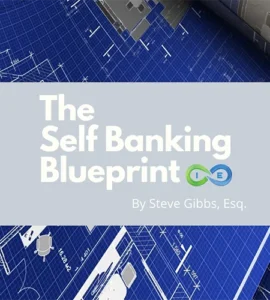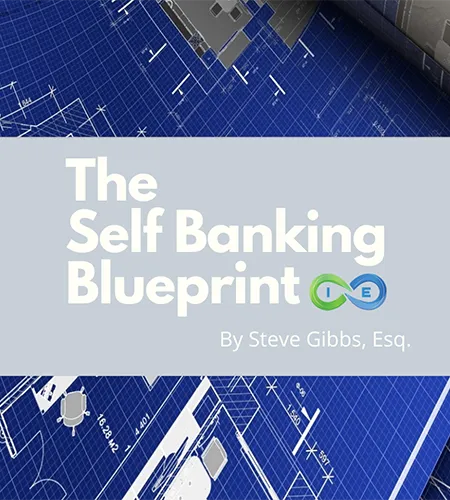You may be surprised to find out that all the best life insurance companies require financial underwriting of prospective applicants when applying for coverage typically around $100,001 or more.
That’s because when most people think about life insurance underwriting, the first factors to come to mind are usually age, gender, and medical history.
For typical underwriting, an insurance company might want to know your date of birth, BMI, blood pressure levels, whether you have asthma or anxiety—that sort of thing.
Most people understand that these factors play a big part in an insurer’s underwriting analysis—often, the biggest part.
But many prospective applicants are surprised to learn that financial underwriting plays an important role, too.
2025 Trend: Financial underwriting is increasingly driven by advanced data analytics, AI, and machine learning technologies that enable faster, more accurate risk assessment by integrating financial, medical, and behavioral data. This data-driven approach is transforming how insurers evaluate applicants’ financial situations and determine appropriate coverage amounts.
Life insurance carriers consider financial information as part of the underwriting process to both help evaluate potential insurer risk and to ensure that the coverage level requested is reasonable in light of the applicant’s financial circumstances.
If an applicant is asking for a lot more coverage than would ordinarily be necessary to replace his or her income, that could be a red flag for the insurance company, justifying a closer inspection of that applicant.
But it could also just mean that he or she has a unique circumstance that necessitates higher coverage.
Table of Contents
- Why Do Life Insurance Companies Need Financial Information?
- How Does Financial Underwriting Work?
- How Does the Type of Coverage Affect Financial Underwriting?
- Emerging Trends in Financial Underwriting for 2025
- Financial Documentation Requirements
- Conclusion
Why Do Life Insurance Companies Need Financial Information?
When issuing a new policy, a life insurance company wants to know that the policy will in fact protect against a real risk—specifically, the economic loss that would result from the death of the named insured.
And the company also needs to verify that the person who stands to benefit from the policy actually bears at least some of the risk being insured against.
This concept is referred to as an “insurable interest,” and it needs to be present in one form or another in every life insurance policy.
The most obvious example is a family member who relies on the insured’s income for support, but there are plenty of other potential insurable interests.
Financial underwriting lets an insurer verify that a bona fide risk and insurable interest are present and that the coverage sought is rationally related to the interest and risk insured against.
Multiple of Income
For instance, if an applicant is purchasing a policy for income protection that names a spouse as beneficiary, the insurer will use a multiple of the current annual income to estimate the total lost income the family might sustain in the event of an untimely death.
It’s not a straight dollar-for-dollar calculation–since people tend to earn more as they get older and provide economic value to their families beyond just income.
But current income levels serve as a concrete baseline for approximating potential future losses.
Multiple of Income Chart
The following personal coverage income replacement multiplier chart is based on the general criteria insurance companies use, but is not reflective of any one specific company.
| Age | Multiply Earned Income By |
|---|---|
| Under 30 | 30-40X |
| 31-39 | 25-30X |
| 40-49 | 20X |
| 50-59 | 15X |
| 60-69 | 5-10X |
| 70+ | Individual Consideration |
So, why do insurers use an income multiplier?
Insurers want to avoid a situation known as “over-insurance,” which is where the death benefit payable to a beneficiary significantly exceeds the actual financial loss that would result from the insured’s death.
As a practical matter, avoiding over-insurance keeps policyholders from paying for coverage that they don’t truly need.
And, as an ethical matter, insurers don’t want beneficiaries in a position where they’d be better off financially if the insured was no longer around. It sounds a little morbid when you put it that way, but it’s a real concern.
Killer Debt
Financial information can also be useful in gaging the risk level an insurer is undertaking and—as a result—the premiums it will charge for the coverage.
A wide variety of data can correlate with life expectancy and insurer risk.
Different carriers do things differently, but certain financial indicators like credit history, bankruptcy filings, and debt-to-income ratio can all affect premiums.
Data-Driven Insights: In 2025, insurers are increasingly leveraging big data analytics to identify correlations between financial health indicators and mortality risk. This allows more precise risk assessment and personalized premium calculation. For example, advanced algorithms can now detect patterns in financial stability that have strong correlations with health outcomes and life expectancy.
See Killer debt: Study shows link between debt and mortality rates
Ability to Pay
An additional reason for requesting financial information is that it helps insurers judge an applicant’s ability to pay for coverage.
If premium payments will eat up an disproportionately large chunk of an applicant’s income—and if another reliable source of cash isn’t available—an insurance company may be reluctant to issue a policy it views as likely to lapse due to non-payment.
THE ULTIMATE FREE DOWNLOAD
The Estate Planners Tactical Guide
Essential Legal Protection for Achievers

How Does Financial Underwriting Work?
Typically, an insurance company creates internal guidelines—made available to agents within field guides—establishing maximum coverage amounts for potential insureds in various categories.
Guideline Factors
Financial underwriting guidelines consider factors like the prospective insured’s age, income and wealth levels, the type of coverage, the beneficiary’s relationship to the insured, and the reason the policy is being purchased.
As a general rule, applicants qualify for greater coverage if they are younger and have higher income and/or wealth levels. Conversely, older applicants with less income and wealth qualify for less coverage.
An insurer’s guidelines set the high end for what the company considers ordinary coverage under the circumstances. Up to the maximum, insurers are comfortable concluding that an insurable risk is realistically present.
The maximum is generally not a hard cap, though. If coverage is requested in an amount that exceeds the guidelines, an applicant might be asked to provide clarification as to why higher-than-usual coverage is needed.
Most life insurance applications ask for basic financial information, like annual income, from all applicants.
When a death benefit is requested outside the applicable guidelines, a carrier might also ask for a more detailed financial statement and documentation.
Or, for especially high coverage amounts, financial statements and documentation might be necessary regardless.
Supplemental Documentation
When supplemental financial underwriting documentation is needed, the agent typically collects the relevant paperwork from the insured and forwards it to the carrier’s underwriters, along with an explanation as to why the requested coverage goes outside the guidelines. Then, the underwriters consider the application in conjunction with the additional materials.
Underwriting is a technical, data-driven process, but it also leaves some room for the subjective judgment of experienced underwriters.
A thorough, well-documented application accompanied by a rational justification for the coverage sought may be approved even if the proposed policy would technically exceed the company’s ordinary guidelines.
How Does the Type of Coverage Affect Financial Underwriting?
Financial underwriting guidelines consider coverage categories when setting caps, so the same insured might qualify for a certain level of coverage in one scenario, but not in another.
A lot depends on the type of policy and, in some cases, who the beneficiary will be.
In most cases, the insurance company wants the death benefit to reasonably approximate the financial loss that would be sustained by the proposed beneficiary in the event of the insured’s death.
Income Replacement
Income Replacement.
Policies written for income replacement are intended to protect beneficiaries against the loss of an insured’s lifetime earning capacity. Frequently, the beneficiary is the insured’s spouse, child, or another close family member.
(Income replacement is a good criteria to use when determining how much life insurance is needed, but your Human Life Value might be the better option for a thorough assessment of your true lifetime need.)
Most insurers establish coverage limits for income-replacement policies using the insured’s current income and an age-based multiplier, as shown in the chart above.
A typical multiplier for a new insured in his or her forties is ‘20X.’ So, the coverage cap for a 45-year old would be equal to his or her current income times twenty.
For older applicants, the multiplier is reduced because they will probably have fewer wage-earning years after the policy is issued. For a 55-year-old applicant, for instance, a typical multiplier is 15X.
Depending on the carrier, other factors affecting the death-benefit limit might include the applicant’s marital status, number of dependents, and a likely increase in future earning capacity.
To avoid over-insuring the applicant, an insurer usually also asks if the applicant is covered under any other life insurance policies.
When personal coverage is requested in excess of ordinary guidelines, insurers usually ask for additional materials like copies of recent tax returns and a detailed financial statement.
For particularly high coverage, an applicant might also need to provide financial verification from an attorney or CPA and/or financial account statements—or sometimes have an interview with one of the company’s underwriters.
Underwriters then review the application and all the materials to decide whether the policy will be issued.
Accelerated Underwriting Trend: In 2025, many insurers are implementing accelerated and algorithmic underwriting models for income replacement policies. These models use digital data sources and predictive analytics to assess financial risk, often reducing or eliminating the need for manual document collection. This can significantly speed up the application process for straightforward cases that fall within standard income multiplier guidelines.
Other Personal Coverage Types.
For some insureds, individual income alone does not sufficiently reflect ordinary coverage needs, and so insurance companies use alternative data in financial underwriting guidelines.
Stay-At-Home Spouse
When evaluating coverage for stay-at-home spouses, insurers might consider aggregate household income, dependents, coverage in place on the other spouse, or other factors impacting the financial loss that would result from untimely death.
Students
When the prospective insured is still a student, financial underwriting guidelines typically consider the applicant’s field of study, proximity to graduation, anticipated future earnings (when possible), and student loan balances.
Minors
Financial underwriting for minor children, takes into account the income and wealth levels of the parents and coverage amounts in place for the parents’ other children, if any.
Insurers anticipate that life insurance for children will be geared more toward policy growth than death benefit.
Life Insurance for Estate Planning
Permanent life insurance can be a useful tool in estate planning for purposes like mitigating estate tax liability, providing reliable liquidity, and efficiently leaving a guaranteed legacy for beneficiaries.
Financial underwriting guidelines on life insurance used for estate planning are generally based around a formula that considers the prospective insured’s current net worth and current age, anticipated expenses and growth, and the types of assets held.
Depending on current resources and the amount of coverage sought, an applicant may need to provide a financial statement, documentation or appraisals for any assets that constitute a large percentage of the estate, and an explanation of the need for coverage.
If a trust will be the beneficiary of the policy, insurers often also require a copy of the trust certificate or other documentation of the trust.
If a charity will be beneficiary, insurers usually consider the insured’s history of charitable giving and any existing relationship with the specific charity.
Permanent Coverage for Retirement Savings
Some whole life and universal life policies are designed to emphasize cash-value accrual over death benefit.
Applying this approach, a larger portion of premiums is devoted to cash value than to underwriting costs, allowing the policy to accumulate interest-earning, tax-deferred cash value at a faster rate.
By design, the cash value whole life insurance policy provides a lower death benefit than what might otherwise be available for the same premium because the primary objective is for the policy’s value to eventually serve as an asset to fund retirement.
Because the death benefit is de-emphasized, premium-to-income ratio is the central metric applied to policies designed for retirement planning.
Underwriting guidelines establish a percentage of annual income, varying by age, that the proposed policy’s annual premiums should not exceed.
For instance, an insurer might not want a 35-year-old policyholder’s yearly premiums to be more than 15% of his or her income.
Typically, the acceptable percentage is higher for older applicants. This is because older applicants have less time till retirement and need to build value faster and because older individuals tend to have lower fixed expenses and more disposable income.
Business Policies
When a life insurance policy has a business-related purpose, an insurer’s financial underwriting guidelines need to consider alternate factors. As with personal policies, the precise factors and necessary documentation depend on the purpose of the policy.
Key Person Insurance
Key Person insurance policies are intended to protect a business from the financial loss that would result from the death of a critical member of the organization.
Underwriting guidelines often set ordinary maximum coverage at around ten times the key person’s annual salary.
However, the multiplier may be higher or lower depending on the insured’s age, which acts as a proxy for anticipated years of future service.
Insurers often require an explanation of a key person’s role in a company to justify higher coverage amounts.
Buy/Sell Agreements
Buy Sell Using Life insurance is the combination of a buy sell agreement funded with life insurance which establish terms for purchase of a departing partner’s ownership interest upon death, retirement, or other separation from the business.
When evaluating a policy that will fund a buy/sell, insurers consider the company’s value in relation to the insured’s ownership interest.
So, for instance, if a business has an appraised value of $1 million, and the prospective insured owns 50%, the ordinary limit would be $500,000.
For underwriting, an applicant may need to provide a financial statement for the business, details of the company’s ownership, and a copy of the buy/sell agreement itself.
Deferred Compensation Packages
Along similar lines, cash-value life insurance can also provide a source of funding for Deferred Compensation Plans.
Underwriting guidelines typically consider the nature and value provided by the package, with coverage amounts not to exceed what the insured employee would qualify for if applying for an income-replacement policy.
Creditor Policies
Creditors sometimes take out life insurance policies on individuals (or principals of organizations) who owe significant loan balances to the creditor. The coverage is intended to protect against the financial loss that would result from non-payment in the event of the insured’s death.
An example would be life insurance for an SBA loan.
Because, absent some other relationship, a creditor’s insurable interest is limited to the amount of debt, financial underwriting guidelines ordinarily set creditor coverage caps equal to outstanding loan balances.
Creditor policies are sometimes structured so that death benefits gradually decrease over time—reducing coverage to correspond to reduced financial risk as the loan is gradually paid down.
This both allows for lower aggregate premiums and avoids a future situation in which the creditor has coverage significantly beyond its present insurable risk in the insured debtor.
Emerging Trends in Financial Underwriting
The financial underwriting landscape is rapidly evolving in 2025, with several key trends reshaping how insurers evaluate financial information and determine appropriate coverage levels:
Portfolio-Level Risk Management
Rather than evaluating each application in isolation, insurers are increasingly shifting to portfolio-level risk management approaches. Using sophisticated algorithms, companies can now monitor and adjust their underwriting criteria in real-time based on aggregate risk profiles and market conditions.
AI-Powered Assessment: Modern underwriting systems now leverage artificial intelligence to analyze vast amounts of structured and unstructured financial data. These AI systems can detect patterns and relationships in data that human underwriters might miss, leading to more accurate risk assessments and policy pricing decisions.
Digital Verification and Alternative Data Sources
The traditional approach of requesting paper financial documents is gradually being replaced by digital verification methods. With applicant permission, insurers can now directly access:
- Banking transaction records
- Investment account information
- Tax filing data
- Business financial performance metrics
- Credit history and financial behavior patterns
This shift not only speeds up the underwriting process but also reduces fraud risk by obtaining financial information directly from verified sources. For additional insights into digital verification methods, see TransUnion’s 2025 Life Insurance Outlook.
Regulatory and Transparency Focus
Increased regulatory scrutiny and consumer demand for transparency are influencing how insurers approach financial underwriting. Companies are implementing more standardized assessment protocols and providing clearer explanations to applicants about how their financial information affects coverage decisions.
This trend toward greater transparency helps address consumer education gaps and builds trust in the underwriting process. For a more detailed examination of regulatory trends, review RGA’s Future of Financial Underwriting report.
Financial Documentation Requirements
While accelerated underwriting is streamlining the process for many applicants, certain situations still require comprehensive financial documentation. The following table outlines common documentation requirements based on policy type and coverage amount:
| Coverage Type | Standard Documentation | High Coverage ($2M+) Additional Requirements |
|---|---|---|
| Income Replacement | Income verification, tax returns (2 years) | Financial statement, CPA letter, investment accounts |
| Estate Planning | Net worth statement, estate tax projection | Asset appraisals, trust documentation, estate planning letter |
| Key Person | Company financials, role description | Business valuation, revenue attribution analysis |
| Buy/Sell | Buy/sell agreement, business financials | Full business valuation, CPA verification |
Even with accelerated underwriting, insurers maintain the right to request additional documentation if the application raises questions or falls outside standard guidelines. For insight into how documentation requirements are changing, explore Principal Financial’s Underwriting Guidelines.
Conclusion
Financial underwriting remains a critical component of the life insurance application process, with insurance companies continually refining their approaches to ensure coverage amounts are appropriate for each applicant’s circumstances.
While the fundamental principles of financial underwriting – verifying insurable interest and appropriate coverage levels – remain constant, the tools and methodologies used to evaluate financial information are rapidly evolving with advances in data analytics and artificial intelligence.
As we move through 2025, applicants can expect more streamlined processes for straightforward cases through accelerated underwriting, but should still be prepared to provide detailed financial documentation for high-coverage amounts or specialized policy types.
Understanding the financial underwriting process and preparing appropriate documentation in advance can help ensure a smoother application experience and improve your chances of securing the coverage you need at favorable rates.
Whether you’re seeking income replacement, funding a business succession plan, or establishing an estate planning strategy, working with an experienced insurance professional who understands the nuances of financial underwriting can make a significant difference in successfully navigating the process.
Navigate Financial Underwriting with Confidence
Before applying for life insurance, get a personalized consultation from our independent advisory team. We’ll help you understand financial underwriting and ensure your coverage aligns with your financial goals and circumstances.
- ✓ Receive a tailored analysis of your financial underwriting needs
- ✓ Compare coverage options for income replacement, estate planning, or business needs
- ✓ Understand documentation requirements and 2025 underwriting trends
- ✓ Get expert guidance on securing optimal coverage at competitive rates
Schedule your complimentary 30-minute financial underwriting consultation today to streamline your life insurance application.
No obligation. No sales pressure. Just expert guidance to help you secure the right life insurance coverage with ease.






